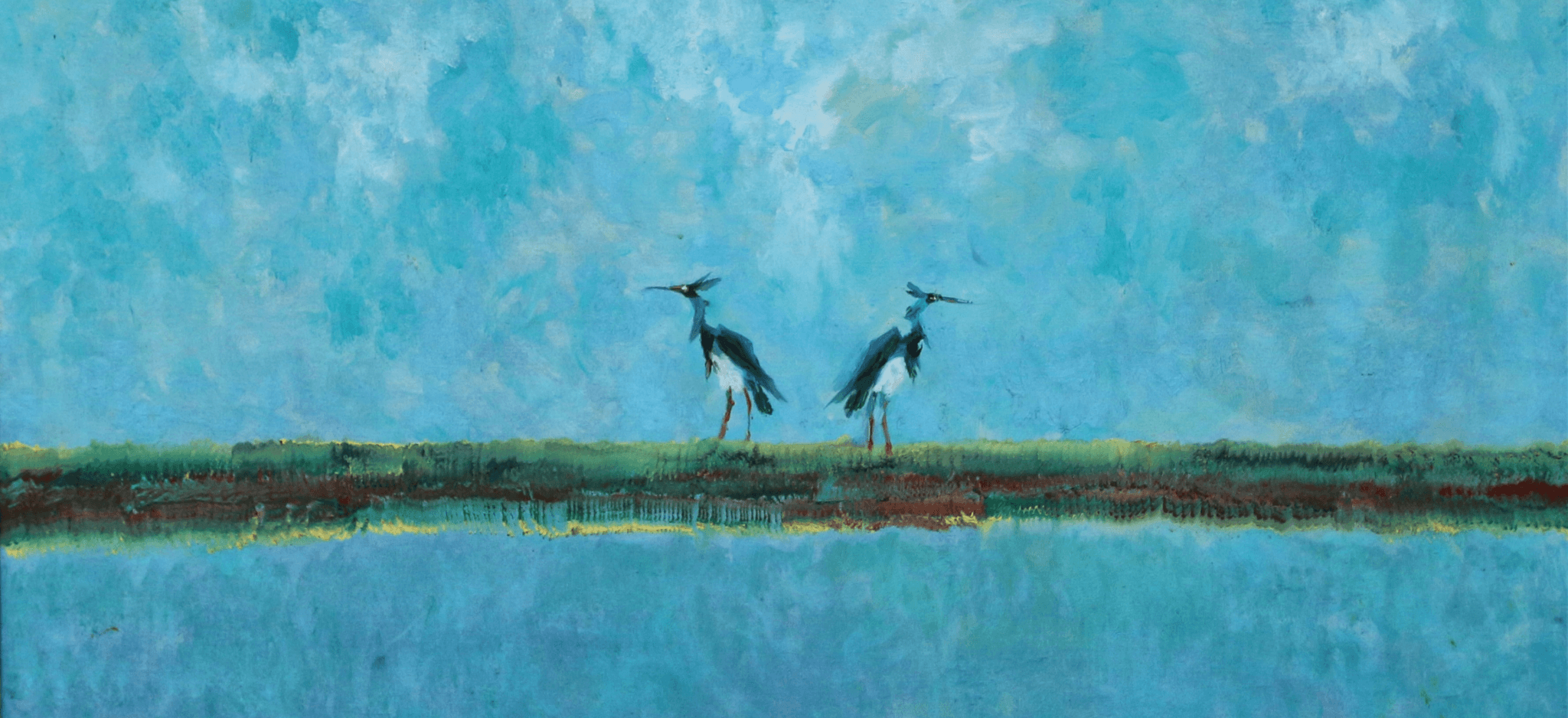
Paintings
Had things gone a little differently, Bronisław Chromy would have been known for his paintings rather than sculptures.
Had things gone a little differently, Bronisław Chromy would have been known for his paintings rather than sculptures. In his student days, the outstanding Polish painter Hanna Rudzka-Cybis who was a teacher at the Academy of Fine Arts in Cracow noted Chromy’s talent for painting and offered to teach him at her studio. Chromy later recalled that he refused for a trivial reason – he decided that a big and strong guy like him would look frankly ridiculous with a small brush in his hand.
Today, it is difficult to say whether he made the right choice. Had he decided differently, Poland would certainly have lost the most outstanding sculptor of recent decades. The important thing, however, is that Bronisław Chromy returned to painting. Indeed, many art critics stress the painting-like nature of his sculptures and the huge role that colour plays in his art, imparting additional emotions to solid shapes. Masuria, where the artist spent every summer, provided a pretext for his paintings, which, just like his sculptures, were born of his loving observations of nature. Chromy’s art consciously harks back to Post-Impressionism, which had been the prevailing trend in painting in his youth. In his painting, but also in his graphic art, he records fleeting moments in an equally fleeting manner. After the initial period, when his paintings still bore a resemblance to his sculptures, the artist entered the stage when he started to use exclusively colour and light, creating more or less vague but always ethereal silhouettes of birds – often owls, which, after all, provided the favourite theme for his sculptures, and also cranes, either wading in water or flying in V formations to depart for warmer climes in the autumn.
Bronisław Chromy could be classified as a colourist painter. He certainly played with colour, but did not stick to a single style, and it would be difficult to pinpoint his favourite colour scheme. Some canvases are dominated by greens, while on others blues or reds prevail. Some of his paintings are extremely intense and vivid, while others – more numerous – evoke nostalgia with their pastel tones, although their colours are sometimes strong as well. Their delicate dreaminess, with silhouettes of birds barely discernible against the foggy sky, reflects the artist’s sensitive soul.
In his plein air painting, Chromy juggles different themes, interests and approaches, experimenting to find new ways. Sometimes, he prefers painting flowers to nature observations, almost sculpting the plants in paint so that they become three-dimensional reliefs. Then, he returns to lyrical painting again – flocks of birds against a blurred sky shrouded in bluish fog.
In his paintings, Chromy does not shun difficult and serious subjects. A good example is his portrait of the Addict (there is also an earlier sculpture with the same name). However, whereas the sculpture is synthetic and concise in the extreme, in the painted version Chromy resorts to an ‘alcoholic’ blurring of shape. Regardless of its form, his work is enormously powerful and expressive.
